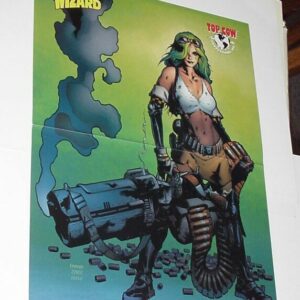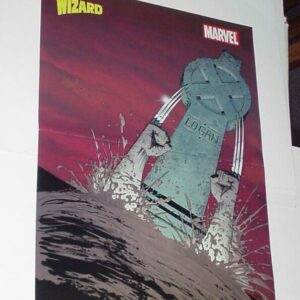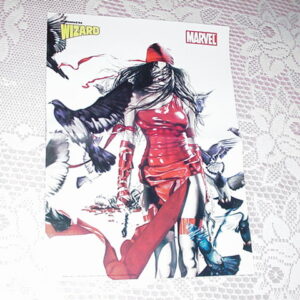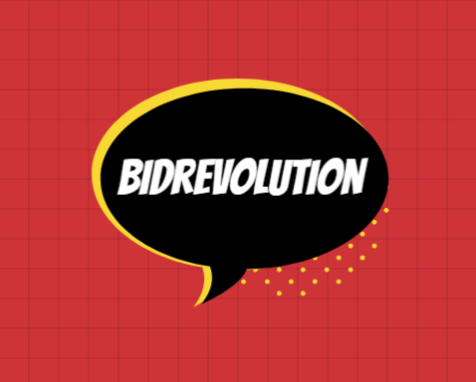Star Trek Poster #24 Kirk, Spock, Bones on Enterprise Voyage Home
$39.99
Description
Star Trek IV: The Voyage Home is a 1986 American science fiction film released by Paramount Pictures. It is the fourth feature film in the film series and completes the story arc begun in The Wrath of Khan and continued in The Search for Spock. Intent on returning home to Earth to face trial for their crimes, the former crew of the USS Enterprise finds the planet in grave danger from an alien probe attempting to contact now-extinct humpback whales. The crew travel to Earth’s past to find whales who can answer the probe’s call.
After directing The Search for Spock, cast member Leonard Nimoy was asked to direct the next feature, and given greater freedom regarding the film’s content. Nimoy and producer Harve Bennett conceived a story with an environmental message and no clear-cut villain. Dissatisfied with the first screenplay produced by Steve Meerson and Peter Krikes, Paramount hired The Wrath of Khan writer and director Nicholas Meyer. Meyer and Bennett divided the story between them and wrote different parts of the script, requiring approval from Nimoy, lead actor William Shatner, and Paramount.
Principal photography commenced on February 24, 1986. Unlike previous Star Trek films, The Voyage Home was shot extensively on location; many real settings and buildings were used as stand-ins for scenes set around and in the city of San Francisco. Special effects firm Industrial Light & Magic (ILM) assisted in postproduction and the film’s special effects. Few of the humpback whales in the film were real: ILM devised full-size animatronics and small motorized models to stand in for the real creatures.
The Voyage Home premiered on November 26, 1986, in North America, becoming the top-grossing film in the weekend box office. The film’s humor and unconventional story were well received by critics, fans of the series and the general audience. It was financially successful, earning $133 million worldwide.
The film earned several awards and four Academy Award nominations for its cinematography and audio. It was dedicated to the crew of the Space Shuttle Challenger, which broke up 72 seconds after takeoff on the morning of January 28, 1986. Principal photography for The Voyage Home began four weeks after Challenger and her crew were lost. A sequel titled Star Trek V: The Final Frontier was released on June 9, 1989.
Despite Shatner’s doubts, Nimoy and Bennett selected a time travel story in which the Enterprise crew encounters a problem that could only be fixed by something only available in the present day (the Star Trek characters’ past). They considered ideas about violin makers and oil drillers, or a disease that had its cure destroyed with the rainforests. “But the depiction of thousands of sick and dying people seemed rather gruesome for our light-hearted film, and the thought of our crew taking a 600-year round trip just to bring back a snail darter wasn’t all that thrilling,” explained Nimoy. The director read a book on extinct animals and conceived the storyline that was eventually adopted. Nimoy hit upon the idea of humpback whales after talking with a friend—their song added mystery to the story, and their size added logistical challenges the heroes would have to overcome.
When Kirk and Spock are traveling on a public bus, they encounter a punk rocker blaring his music on a boom box, to the discomfort of everyone around him. Spock takes matters into his own hands and performs a Vulcan nerve pinch. Part of the inspiration for the scene came from Nimoy’s personal experiences with a similar character on the streets of New York; “I was struck by the arrogance of it, the aggressiveness of it, and I thought if I was Spock I’d pinch his brains out!” On learning about the scene, Kirk Thatcher, an associate producer on the film, convinced Nimoy to let him play the role; Thatcher shaved his hair into a mohawk and bought clothes to complete the part. Credited as “punk on bus”, Thatcher (along with sound designer Mark Mangini) also wrote and recorded “I Hate You”, the song in the scene, and it was his idea to have the punk—rendered unconscious by the pinch—hit the stereo and turn it off with his face.
William Shatner as Captain James T. Kirk, commanding officer of the USS Enterprise. Leonard Nimoy as Commander Spock, the ship’s science officer and first/executive officer (i.e. second-in-command). Spock is the only character from the original pilot to appear in the aired series. DeForest Kelley as Lieutenant Commander Dr. Leonard “Bones” McCoy, the Enterprise’s chief medical officer.
Star Trek made celebrities of its cast of largely unknown actors. Kelley had appeared in many films and television shows, but mostly in smaller roles that showcased him as a villain. Nimoy also had previous television and film experience but was also not well known. Nimoy had partnered previously with Shatner in a 1964 episode of The Man from U.N.C.L.E., “The Project Strigas Affair”, and with Kelley (as a doctor) in a 1963 episode of The Virginian, “Man of Violence”, both more than two years before Star Trek aired for the first time. Before Star Trek, Shatner was well known in the trade, having appeared in several notable films, played Cyrano de Bergerac on Broadway, and even turned down the part of Dr. Kildare. However, when roles became sparse he took the regular job after Jeffrey Hunter’s contract was not renewed. After the episodes aired, many performers found themselves typecast because of their defining roles in the show. (Star Trek: The Next Generation actor Michael Dorn stated in 1991, however: “If what happened to the first cast is called being typecast, then I want to be typecast. Of course, they didn’t get the jobs after `Trek.’ But they are making their sixth movie. Name me someone else in television who has made six movies!”)
The three main characters were Kirk, Spock, and McCoy, with writers often playing the different personalities off each other: Kirk was passionate and often aggressive, but with a sly sense of humor; Spock was coolly logical; and McCoy was sardonic, emotional, and illogical, but always compassionate. In many stories the three clashed, with Kirk forced to make a tough decision while Spock advocated the logical but sometimes callous path and McCoy (or “Bones,” as Kirk nicknamed him) insisted on doing whatever would cause the least harm. McCoy and Spock had a sparring relationship that masked their true affection and respect for each other, and their constant arguments became popular with viewers.
Near mint condition.
Related products
-


Aphrodite IX Poster # 2 by Trevor Hairsine Image
$29.99 Add to cart -


Liberty Meadows Poster # 1 The Cow vs Brandy by Frank Cho University2
$29.99 Add to cart -


Wolverine Poster #13 Lives! by John Cassaday X-Men
$34.99 Add to cart -


Elektra Poster # 2 by Rodolfo Migliari Daredevil Thunderbolts
$29.99 Add to cart



